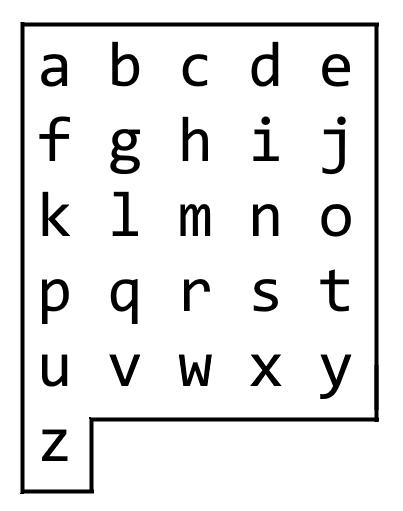On an alphabet board, we start at position (0, 0), corresponding to character board[0][0].
Here, board = [“abcde”, “fghij”, “klmno”, “pqrst”, “uvwxy”, “z”], as shown in the diagram below.
We may make the following moves:
- ‘U’ moves our position up one row, if the position exists on the board;
- ‘D’ moves our position down one row, if the position exists on the board;
- ‘L’ moves our position left one column, if the position exists on the board;
- ‘R’ moves our position right one column, if the position exists on the board;
- ‘!’ adds the character board[r][c] at our current position (r, c) to the answer.
(Here, the only positions that exist on the board are positions with letters on them.)
Return a sequence of moves that makes our answer equal to target in the minimum number of moves. You may return any path that does so.
1 | class Solution { |
1 | class Solution { |
